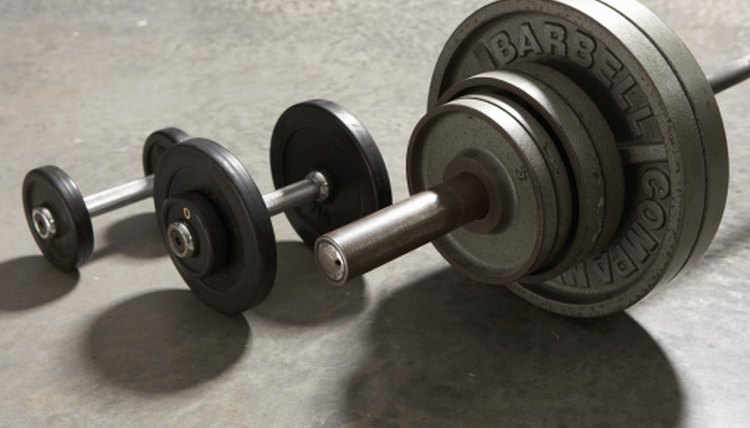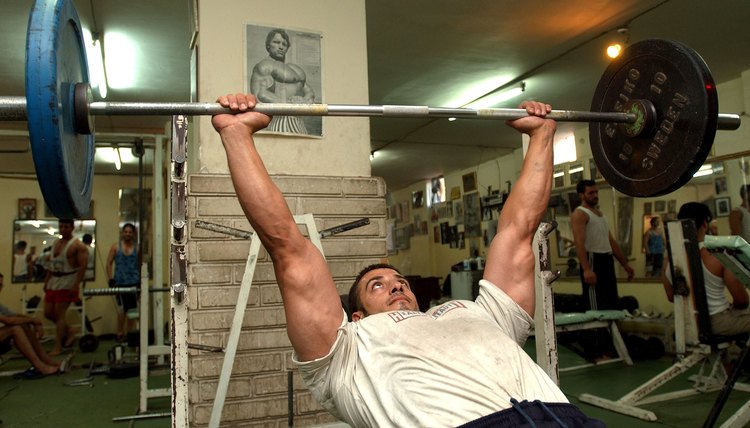What Are Free Weights? (with Video)

A free weight is any type of weight training equipment that does not limit the range of motion with which you can use it. Free weight exercises are useful for building muscle mass, targeting specific muscle groups, building strength, speed, flexibility, and balance.
Weight lifters of all fitness levels, especially beginners, can benefit from the use of free weights in their workout routine, provided that they warm up, train with proper form at all times, and understand the function and limitations of this type of equipment in their training sessions.

Thomas Northcut/Photodisc/Getty Images
Types of Free Weights
A common type of free weight is the barbell, which allows you to load weight plates onto the ends and clamp them in place. Barbells come in various lengths and can be used for a wide range of exercises, such as the bench press, back squats, deadlifts and bicep curls.
Other types of free weights include dumbbells, kettlebells and medicine balls. Some dumbbells and similar free weights are adjustable like barbells, but many are made of solid steel so they are highly durable.

Thomas Northcut/Photodisc/Getty Images
Benefits of Free Weights
According to the American Council on Exercise, training with free weights provides better overall strengthening than using machines because they mimic natural movements. Because you are not limited in how you move the weight, many trainers use free weights to help athletes and clients build the muscles they require in their sporting and daily lives.
Additionally, free weights engage stabilizing muscles throughout your body as you balance the weight, so you become stronger overall and improve your upper body and lower body strength and wellness at the same time, even if you aren’t specifically targeting those muscles with your movement patterns.
Free Weight Drawbacks
The same freedom of motion that makes free weights beneficial for strength training in your weightlifting routine also makes them significantly more dangerous than weight machines, especially when doing overhead motions.
The American Council on Exercise points out that learning to isolate a muscle when using free weights to train properly can be difficult without guidance. Unless you use slow, controlled movements, you end up swinging the free weights, leading to momentum doing most of the work and increasing your risk of injury.

Thomas Northcut/Photodisc/Getty Images
Cost and Maintenance
Free weights are relatively inexpensive when compared to a weight training machine. With just a barbell, some weight plates and perhaps a pair of dumbbells you can accomplish a comprehensive full body workout. Additionally, free weights require very little maintenance, unlike machines that have moving parts and can break down after a few years of use- this makes them ideal in-home gym equipment for home workouts.
Best Free Weight Workouts
Free weight quad exercises
Free weight triceps exercises
Free weight hamstring exercises
Free weight glute exercises
Explore In Depth
References
Writer Bio
Writing professionally since 2005, Ryan Haas specializes in sports, politics and music. His work has appeared in "The Journal-Standard," SKNVibes and trackalerts. Haas holds a Bachelor of Arts in English and creative writing from the University of Illinois.
